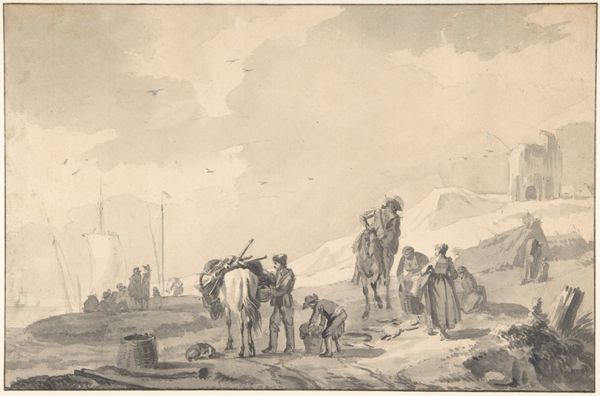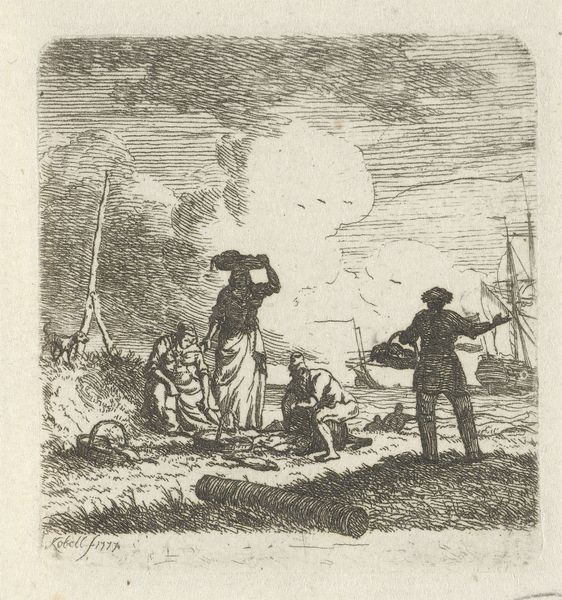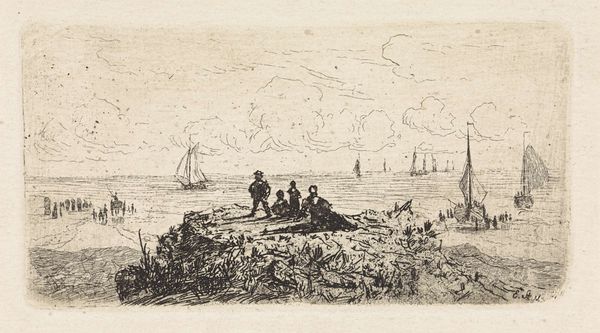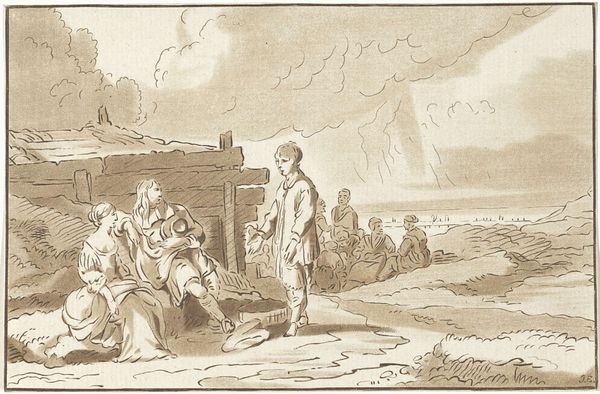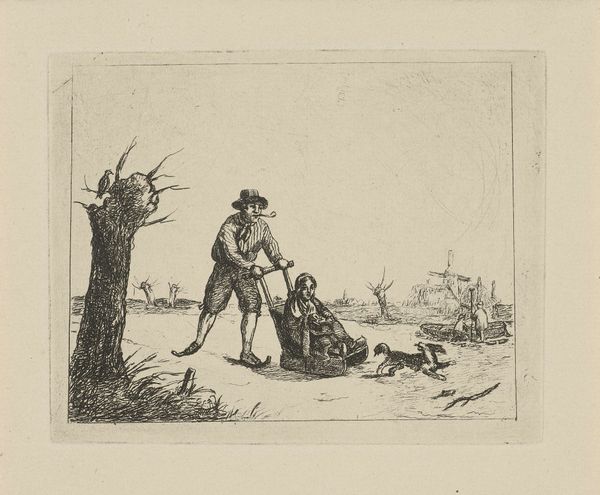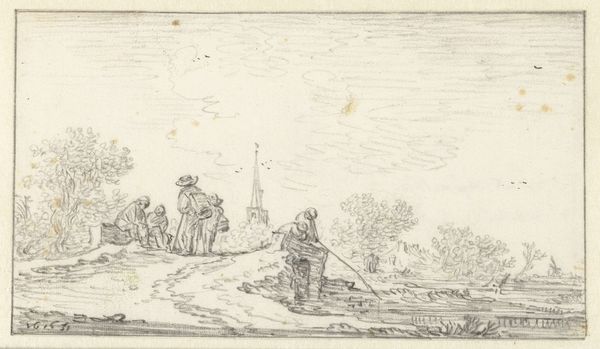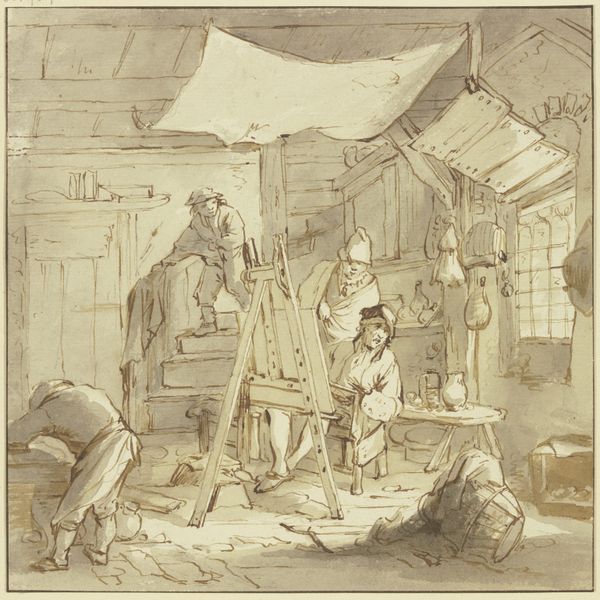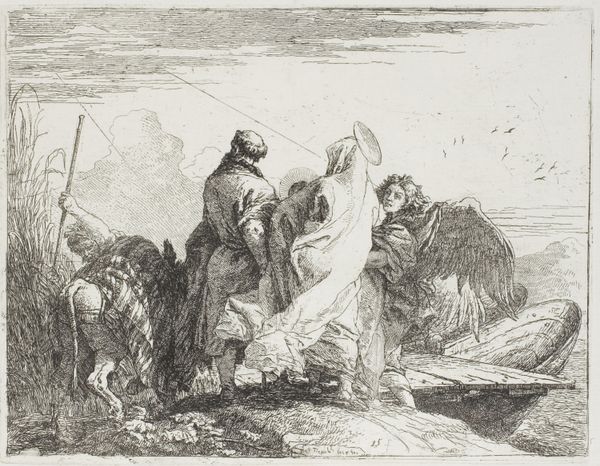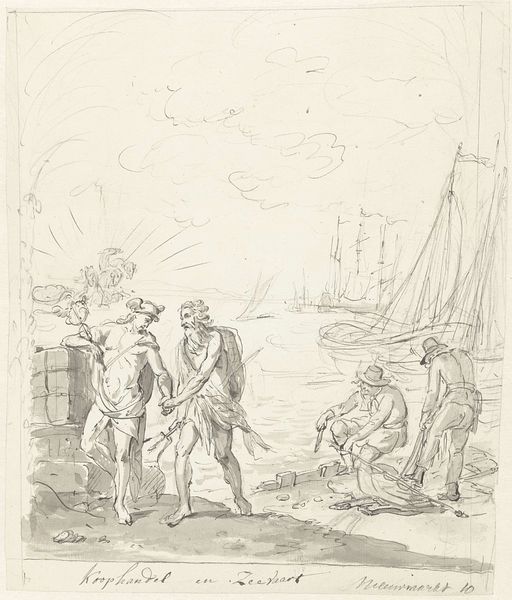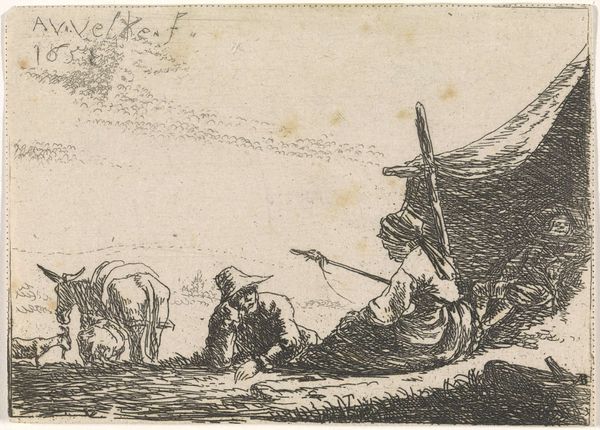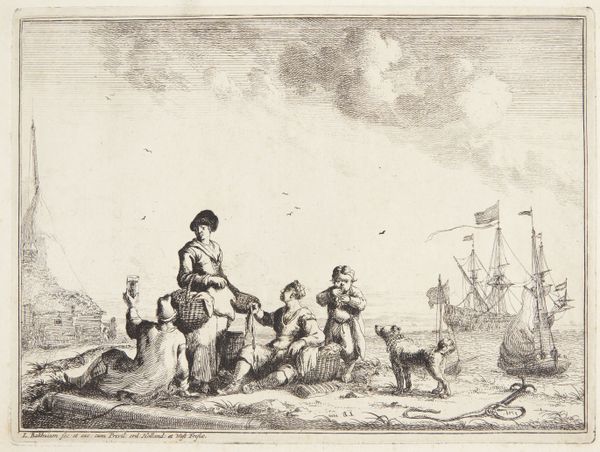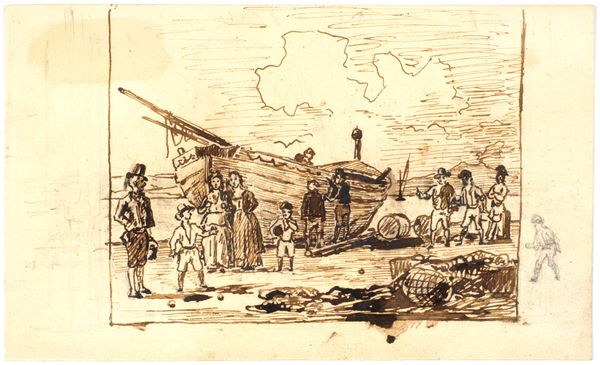
Dimensions: height 48 mm, width 49 mm
Copyright: Rijks Museum: Open Domain
Editor: This is "The Sorting of Fish on the Beach" by Hendrik Kobell, sometime between 1761 and 1779, a drawing done with watercolor. It feels like a very direct, unvarnished depiction of labor. What catches your eye when you look at it? Curator: It’s fascinating to consider this drawing as a document of production. Kobell gives us this scene of labor on the beach—but what were his intentions with this particular configuration of paper, ink, and pigment? How does its creation and potential consumption speak to the economic realities of art production in the 18th century? Editor: I hadn't thought about the economics of it. Is it a straightforward depiction or is he trying to say something about these people? Curator: Think about the "plein-air" designation. Where and how would he be using these materials? And what social class did the practice appeal to? I'm also curious about the materials themselves - the paper, the watercolor... What was available at that time, and who had access to it? Could it have served a specific function for merchant or trading networks? Editor: That's interesting... almost like a report or record. Not just a pretty picture. It shows the reality of the fishing industry, from the material act of sorting fish on the beach to a broader picture. Curator: Precisely! And by understanding the conditions of its production – Kobell's access to materials, his techniques, and the social context – we get closer to understanding its value and meaning. Not just artistic, but also economic and social. What do you think, now? Editor: It’s made me rethink how I see these older artworks. It's more than just what is shown in the picture itself, but also how it was made. Curator: Exactly! Seeing art through a materialist lens, grounds it in the tangible realities of its time.
Comments
No comments
Be the first to comment and join the conversation on the ultimate creative platform.
